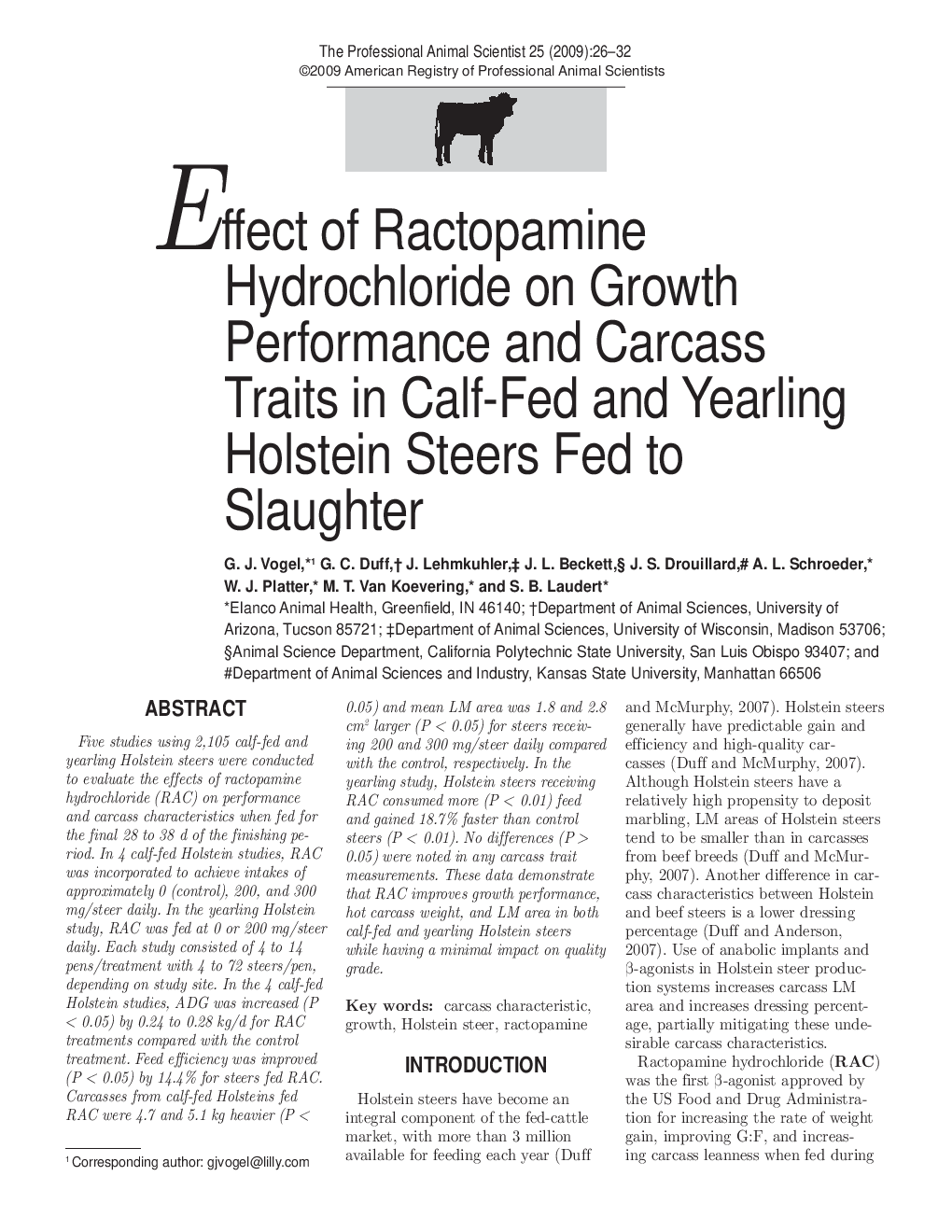| Article ID | Journal | Published Year | Pages | File Type |
|---|---|---|---|---|
| 2454462 | The Professional Animal Scientist | 2009 | 7 Pages |
Abstract
Five studies using 2,105 calf-fed and yearling Holstein steers were conducted to evaluate the effects of ractopamine hydrochloride (RAC) on performance and carcass characteristics when fed for the final 28 to 38 d of the finishing period. In 4 calf-fed Holstein studies, RAC was incorporated to achieve intakes of approximately 0 (control), 200, and 300 mg/steer daily. In the yearling Holstein study, RAC was fed at 0 or 200 mg/steer daily. Each study consisted of 4 to 14 pens/treatment with 4 to 72 steers/pen, depending on study site. In the 4 calf-fed Holstein studies, ADG was increased (P < 0.05) by 0.24 to 0.28 kg/d for RAC treatments compared with the control treatment. Feed efficiency was improved (P < 0.05) by 14.4% for steers fed RAC. Carcasses from calf-fed Holsteins fed RAC were 4.7 and 5.1Â kg heavier (P < 0.05) and mean LM area was 1.8 and 2.8Â cm2 larger (P < 0.05) for steers receiving 200 and 300 mg/steer daily compared with the control, respectively. In the yearling study, Holstein steers receiving RAC consumed more (P < 0.01) feed and gained 18.7% faster than control steers (P < 0.01). No differences (P > 0.05) were noted in any carcass trait measurements. These data demonstrate that RAC improves growth performance, hot carcass weight, and LM area in both calf-fed and yearling Holstein steers while having a minimal impact on quality grade.
Related Topics
Life Sciences
Agricultural and Biological Sciences
Animal Science and Zoology
Authors
G.J. Vogel, G.C. Duff, Lehmkuhler J., J.L. Beckett, J.S. Drouillard, A.L. Schroeder, W.J. Platter, M.T. Van Koevering, S.B. Laudert,
